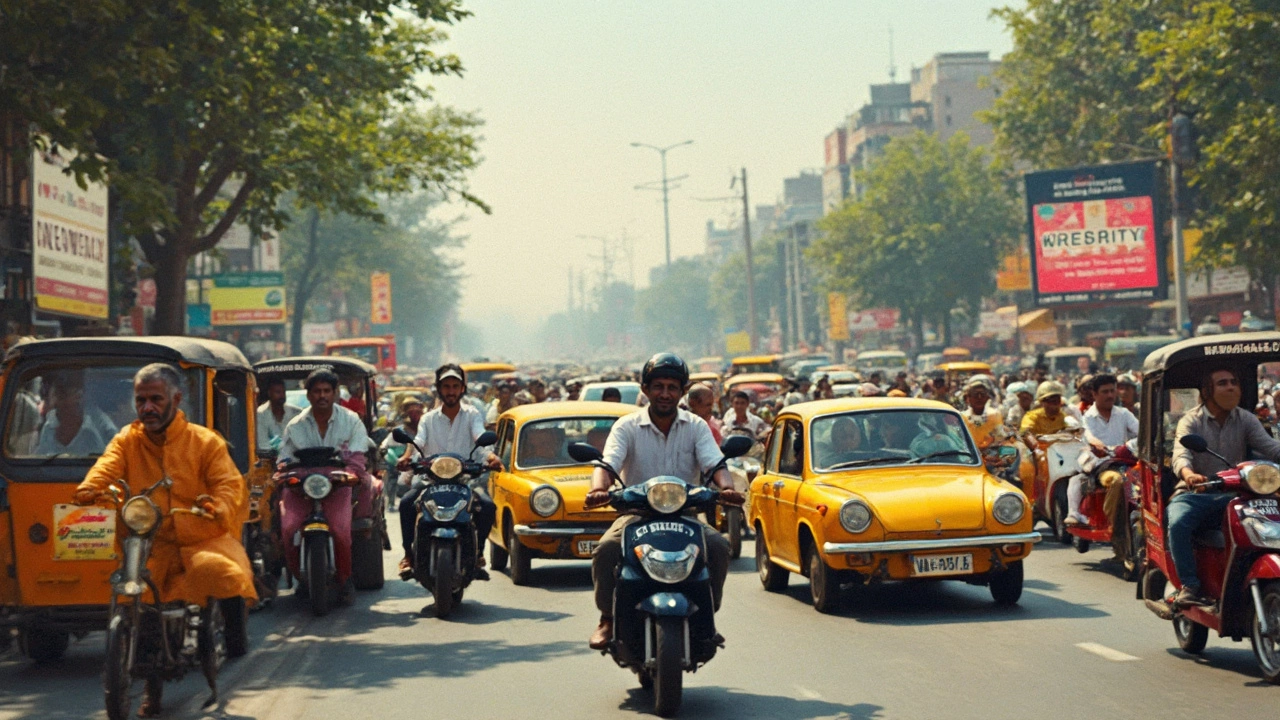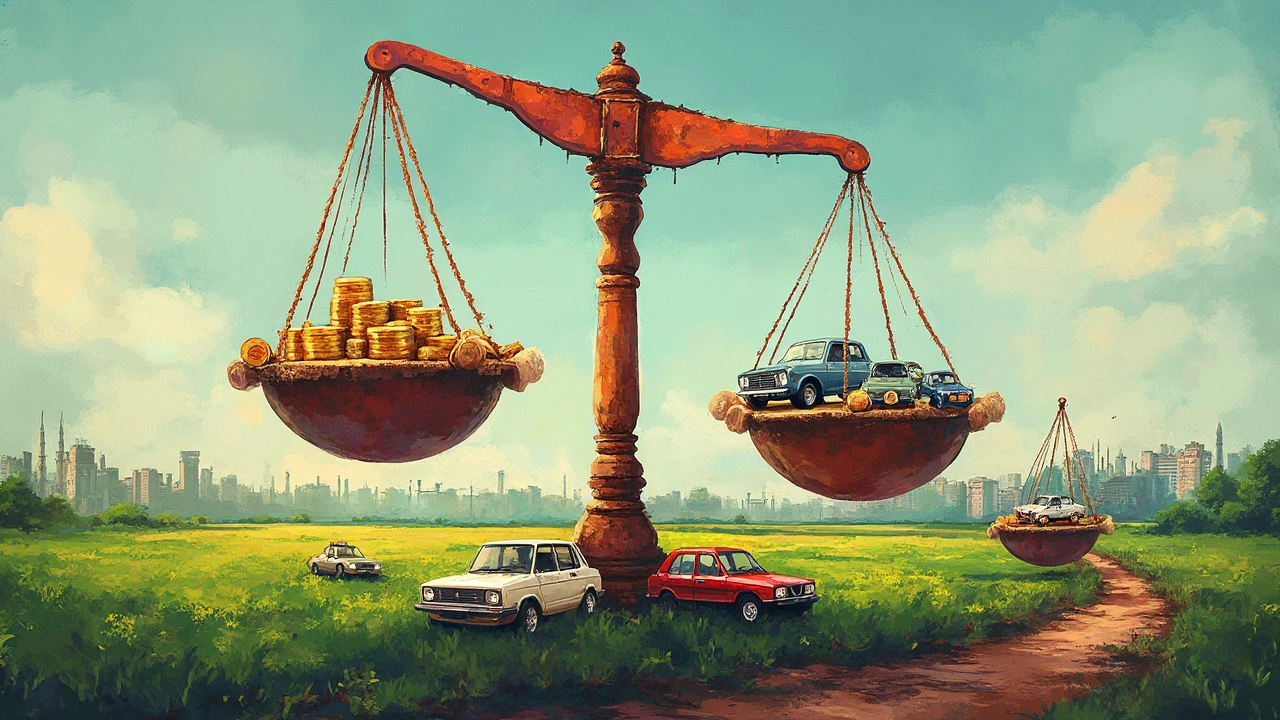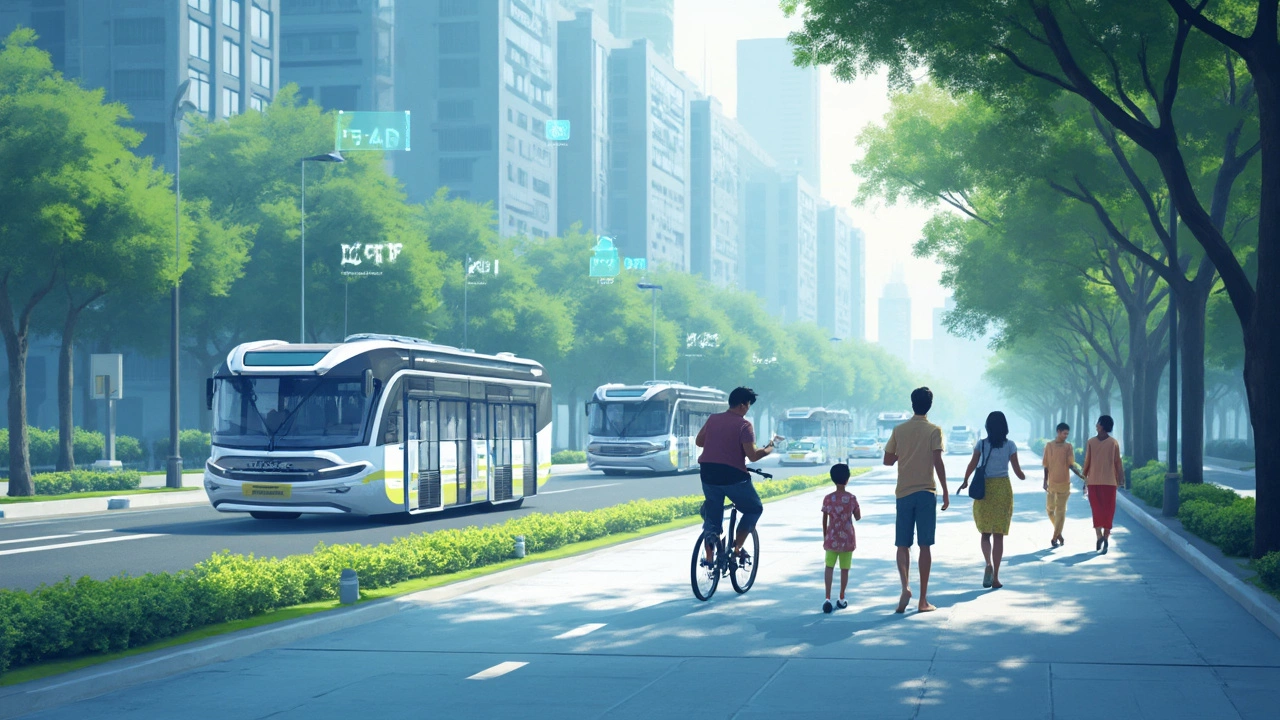
Wondering why cars aren't buzzing off the lot in India these days? It's not just a simple hiccup—several gears are turning, affecting the whole scene. Let's kick things off with the economy. With rising costs and fluctuating incomes, many folks are holding back on big purchases like cars. It's a tough call between owning a vehicle and managing everyday expenses.
And it's not just about money. People's preferences are changing too. More folks are leaning towards sustainability and thinking twice before buying a traditional car. Electric vehicles are catching eyes, but limited infrastructure can still be a deterrent.
- Economic Challenges
- Changing Consumer Preferences
- Impact of Shared Mobility
- Environmental Regulations
- Potential Solutions and Adaptations
Economic Challenges
So, what's really dragging down car sales in India? Dive into the economic factors at play. First, the fluctuations in fuel prices have been a real rollercoaster. When prices at the pump shoot up, people naturally think twice about buying fuel-guzzling vehicles. It's not just about the buying cost; it's about the long-term expenses.
Another piece of the puzzle is the broader economic slowdown. The country's GDP growth has had its ups and downs, impacting consumer confidence. When the future seems uncertain, big investments like cars take a back seat.
Interest Rates and Loan Accessibility
Car buying usually means securing a loan for most folks. But guess what? Recent hikes in interest rates have made loans more expensive. That extra pinch dissuades potential buyers, making owning a car seem out of reach.
Not to forget, the shadow of rising inflation looms large. Basic essentials are costing more, squeezing the budget for luxury purchases like automobiles. When daily living becomes pricier, cars often become a “later” thing.
Impact of Government Policies
Recent GST hikes on automobiles haven’t helped either. The higher tax slabs have added to the on-road cost of vehicles, making them way less appealing for price-sensitive buyers.
For manufacturers, the ripple effects of policy changes mean tighter profit margins and less flexibility to offer discounts or perks to lure buyers. It's a challenging balancing act.
Changing Consumer Preferences
So, why are people giving a second thought before buying a car in India? Well, it's all about what folks want these days, and it's shifting big time. Let's break it down a bit.
Tech-Savvy Buyers
Today's consumers are pretty tech-savvy. They want more than just a ride from A to B; they're after features like touchscreen interfaces, smartphones sync, and even semi-autonomous tech. If a car doesn't sport these nifty features, it's not really catching their eye anymore. And if the money is tight, people don't mind holding off until something better comes along.
Sustainability and Awareness
The buzz around climate change and pollution? It's for real and hitting home. People are aware of the environmental impact of traditional gasoline vehicles. This awareness pushes many towards greener choices like electric vehicles (EVs). But here's the catch – the infrastructure for EVs isn't fully there. While electric is attractive, the lack of charging stations can make folks hesitate.
Shared Mobility on the Rise
Ever noticed how often people opt for ride-sharing over buying a car? It's because the need to own a vehicle has changed. Urban areas in India are witnessing a boom in shared mobility services. Why worry about car loans when you can just book a ride with a tap?
These shifts are crucial for automakers. They're figuring out how to adapt to these trends, whether it's building cars with more tech or investing in electric. It's a pivotal moment for the India car market as they gauge what buyers truly want today.

Impact of Shared Mobility
Now, let's talk about how shared mobility is shaking things up in the Indian car market. This isn't some passing trend; it's a new way people are thinking about getting from point A to point B without actually owning a vehicle. Remember when owning a car was a status symbol? Well, times are changing.
Ride-sharing Grows in Popularity
Apps like Uber and Ola offer a convenient get-around option, and they're all the rage, especially in urban areas. It's like having a chauffeur at your fingertips without the hassle of car maintenance or parking woes. For many, a regular subscription to these services ends up being cheaper than owning a car, considering fuel, maintenance, and insurance costs.
The Rise of Car Rentals
Companies like Zoomcar and Revv are making it super easy to rent a car for a day or two. It's a great option if you need some wheels for a weekend trip. This model suits people who drive occasionally instead of having a car sit around collecting dust and costing money when you don't even drive it every day.
The Millennial Mindset
A lot of millennials and Gen Z folks view car ownership differently. For them, it's more about accessibility than possession. They value experiences over things, and a car just doesn't make the cut as a necessary possession. Plus, they have environmental concerns, preferring options that reduce their carbon footprint.
Shared Mobility's Double-Edged Sword
While shared mobility offers flexibility and cost savings, it also means fewer cars are being sold. This shift affects the automobile manufacturing in India, which has to adapt to a market where 'owning a car' isn't the default choice. Local manufacturers might need to pivot towards creating vehicles tailored for fleets or electric models to stay relevant.
The trend isn't falling off any time soon, and shared mobility might just be the future of the India car market. Whether that's a good or bad thing depends on who you ask, but one thing's clear—it's a game-changer.
Environmental Regulations
India's pushing hard for cleaner air and less pollution, but how does it affect the car sales India scene? Well, it starts with stricter rules popping up. The government rolled out the Bharat Stage VI norms, which are kinda like superhero-level standards for emissions. Sure, it's great for the air, but it also means carmakers have to spend more to make their rides meet these standards—costs that might get passed down to you.
What Are Bharat Stage VI Norms?
These norms limit the pollutants cars can spit out. To give you a quick rundown, vehicles now need tech that cuts those nasty particle numbers and nitrogen oxide by a whopping 70% compared to the older Bharat Stage IV. It's a big leap, but it also means car prices might jump, and not everyone’s ready to make that extra stretch.
While automobile manufacturers hustle to update their fleets, buyers hesitate as costs rise. It's a push and pull kind of situation, especially for people used to snagging budget-friendly wheels. With these rising costs, maintaining momentum in automobile manufacturing India is like balancing on a tightrope.
Impact on Electric Vehicles
Now, here's where it gets interesting: electric cars are getting some love. With incentives and subsidies, they're becoming more attractive. But, let's not forget the infrastructure's still catching up. Charging stations aren't everywhere yet, which can make switching to electric a long-term gamble for many.
As for when we'll see a stabilizing effect from these environmental regulations? That's anyone's guess. It might take some time for car manufacturers and consumers to completely adapt, kinda like waiting for your favorite show to get renewed for a new season.

Potential Solutions and Adaptations
So, what can be done to lift the car sales slump in India? Well, there are a few ways to tackle this bumpy ride. First off, the auto industry and government need to work hand-in-hand to make cars more affordable for people. This could mean cutting down taxes or offering incentives for buying new vehicles.
Government Support and Incentives
Let's talk about how the government can lend a hand. By initiating subsidy programs for electric vehicles (EVs) and reducing GST on new cars, the government can lower the cost of owning a car. Benefits like lower road tax for electric vehicles can nudge more buyers towards sustainable options.
Infrastructure Boost
Another major roadblock is the lack of infrastructure, especially for electric vehicles. Setting up more charging stations can really make a difference, encouraging people to switch to EVs. Imagine being able to find a charging point as easily as a petrol pump—that's the dream scenario.
Embracing Technology
Also, technology can be a game-changer here. Car manufacturers should look into making vehicles with advanced safety and automated features, appealing more to tech-savvy younger buyers. It doesn’t hurt to make cars smarter and more convenient.
Flexible Ownership Models
Another smart move is offering flexible ownership models like car leasing or long-term rentals. Not everyone wants to own a car outright. These options can be real attractive, especially in urban areas where public transportation is strong.
So, there you have it: strategies that could rev up the car sales India engine once more. If all parties get on board, driving the market forward isn’t just a pipe dream.

